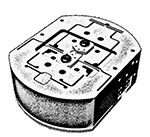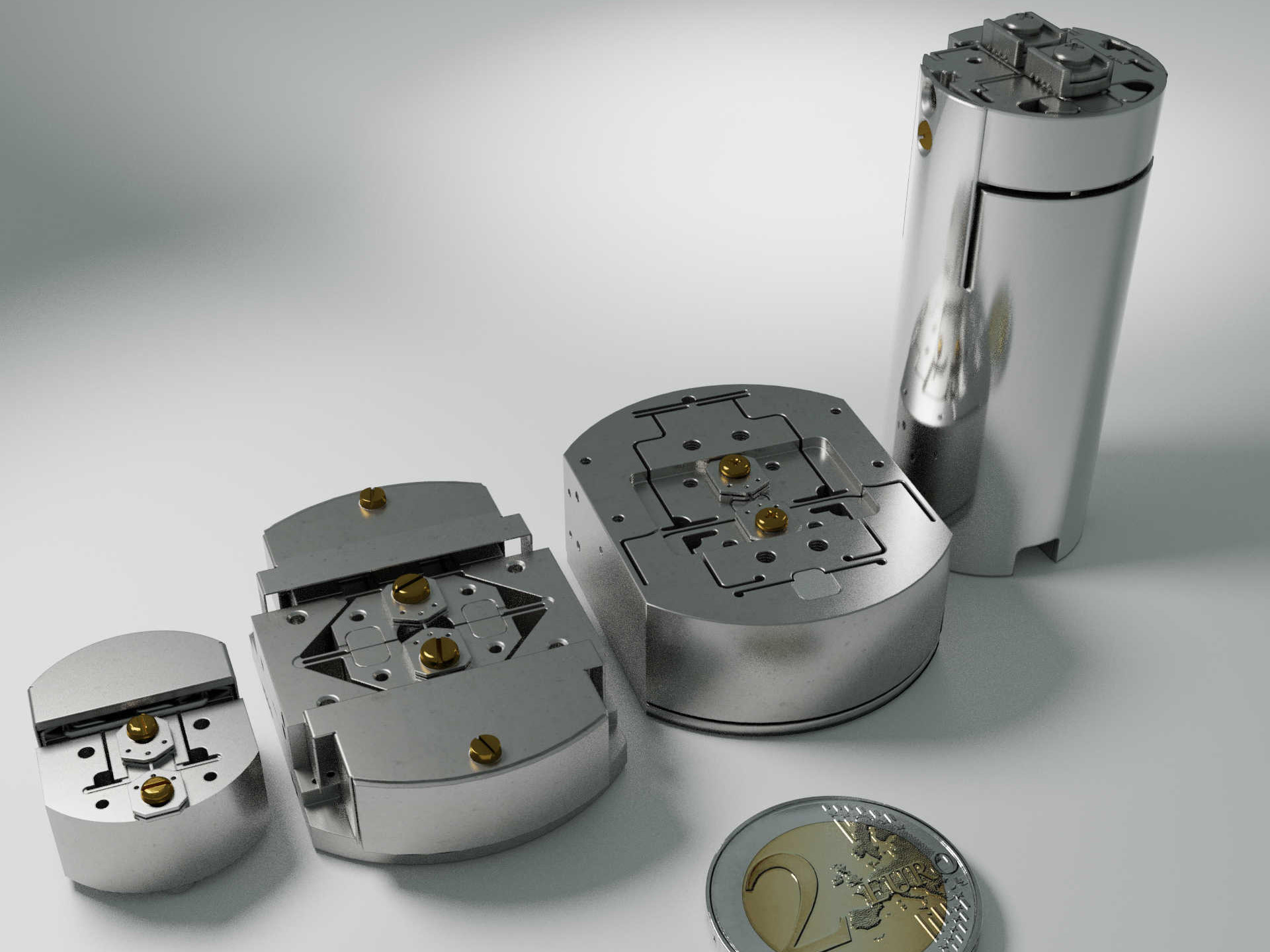All of the Razorbill Instruments stress/strain cells can operate at temperatures down to below 1 K and at high magnetic field. The page should help advise you as to which model will be the most suited to your experimental requirements while being compatible with your cryostat.
Razorbill Instruments sell three main types of product: the CS series which measure applied displacement (strain), the FC series which are higher performance and measure the applied force (stress) and our most recent product line UC which are universal cells that measure both force and displacement. Careful consideration should be given to the amount of sample space available in your cryostat, and customers who are limited to a 1-inch magnet bore (such as a Quantum Design PPMS) will be limited to just two options: our smallest CS cell, the CS100 and the FC100.
We provide several different models in our (displacement measuring) CS series, with differing performance depending on the amount of sample space available within the cryostat. In addition, we provide a CS200T that incorporates a sample access cone on the rear of the cell that is designed for XRD and other scattering or transmission measurements.
Our ultimate device is the UC200, as the ability to measure applied force and displacement simultaneously provides the highest possible level of control and the most data about the mechanical properties of the strain-tuned sample.
Stress vs Strain: What to measure
A key difference between the CS series strain cells and the FC series stress cells involves the parameter being measured. The CS series has a displacement sensor in parallel with the sample to measure applied displacement, and hence strain, whereas the FC series strain cells have a force sensor in series with the sample to measure applied force, and hence stress. In both types of device, the sample is mounted using epoxy. Because the epoxy itself experiences a strain, not all the displacement applied to the sample will translate into sample strain. This means that force is a parameter that is less susceptible to variations in the way the sample is mounted and a generally more repeatable metric.
If the sample space is sufficient to accommodate the 47 mm diameter UC200, then no compromise is necessary: both stress and strain can be measured.
Compatible with a wide range of techniques
The uniaxial pressure cells provide a way to tune the electronic properties of materials. In order to measure these changes, the strain application must be combined with one or more measurement techniques. The sample is suspended between two anchors on the top surface of the uniaxial pressure cells so that it is highly accessible to other measurement techniques during straining. It has been successfully combined with transport and susceptibility measurements as well as scanning probe and optical techniques.
| Specifications | CS100 | CS200T | UC200 | FC100 | |
|---|---|---|---|---|---|
| Maximum applied displacement at zero load | Cryogenic temperature | ±3 µm | ±11 µm | ±9 μm | ±25 μm |
| Maximum applied force | Cryogenic temperature | ±45 N | ±50 N | ±45 N | ±90 N |
| Maximum sample spring constant | 5 × 106 N/m | 5 × 106 N/m | Unlimited | Unlimited | |
| Feedback Sensor | Applied Displacement | √ | √ | √ | - |
| Applied force | - | - | √ | √ | |
| Dimensions | Diameter Height Weight |
24 mm 13 mm 24 g |
49 mm 15 mm 55 g |
47 mm 16 mm 80 g |
25.4 mm 62 mm 100 g |
| PPMS Compatible | √ | - | - | √ | |
| Sample access cone for transmission & diffraction | - | √ | - | - | |
| Power supply | RP100 | RP100 | RP100 | RP100 |

|

|

|

|
| Go to CS1X0 series product page |
Go to CS2X0 series product page |
Go to UC200 series product page |
Go to FC series product page |
| ·Compact ·Low-cost ·Measures applied displacement |
·Long Range ·Transmission & diffraction ·Beamline user facilities |
·Measurement of both stress and strain ·Total control during tuning ·Simultaneously monitor structural and electronic transitions |
·Fits 1-inch bore ·High performance ·Measures applied force |




